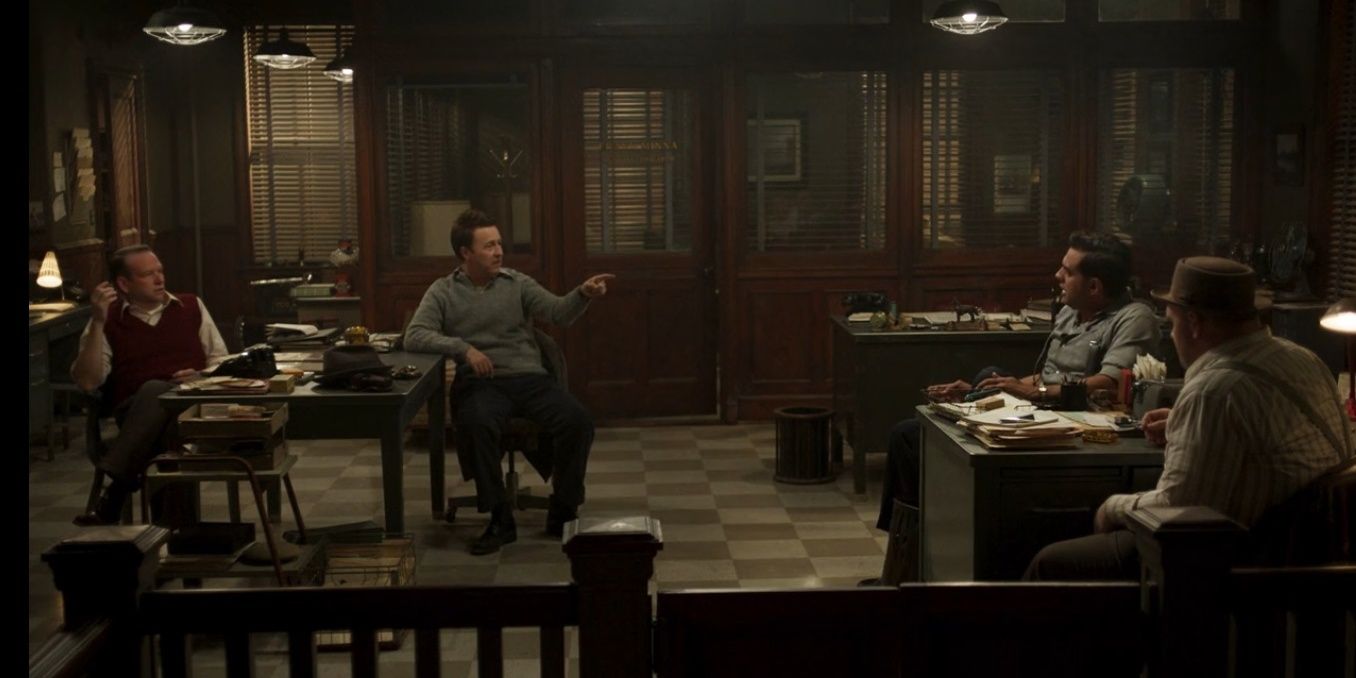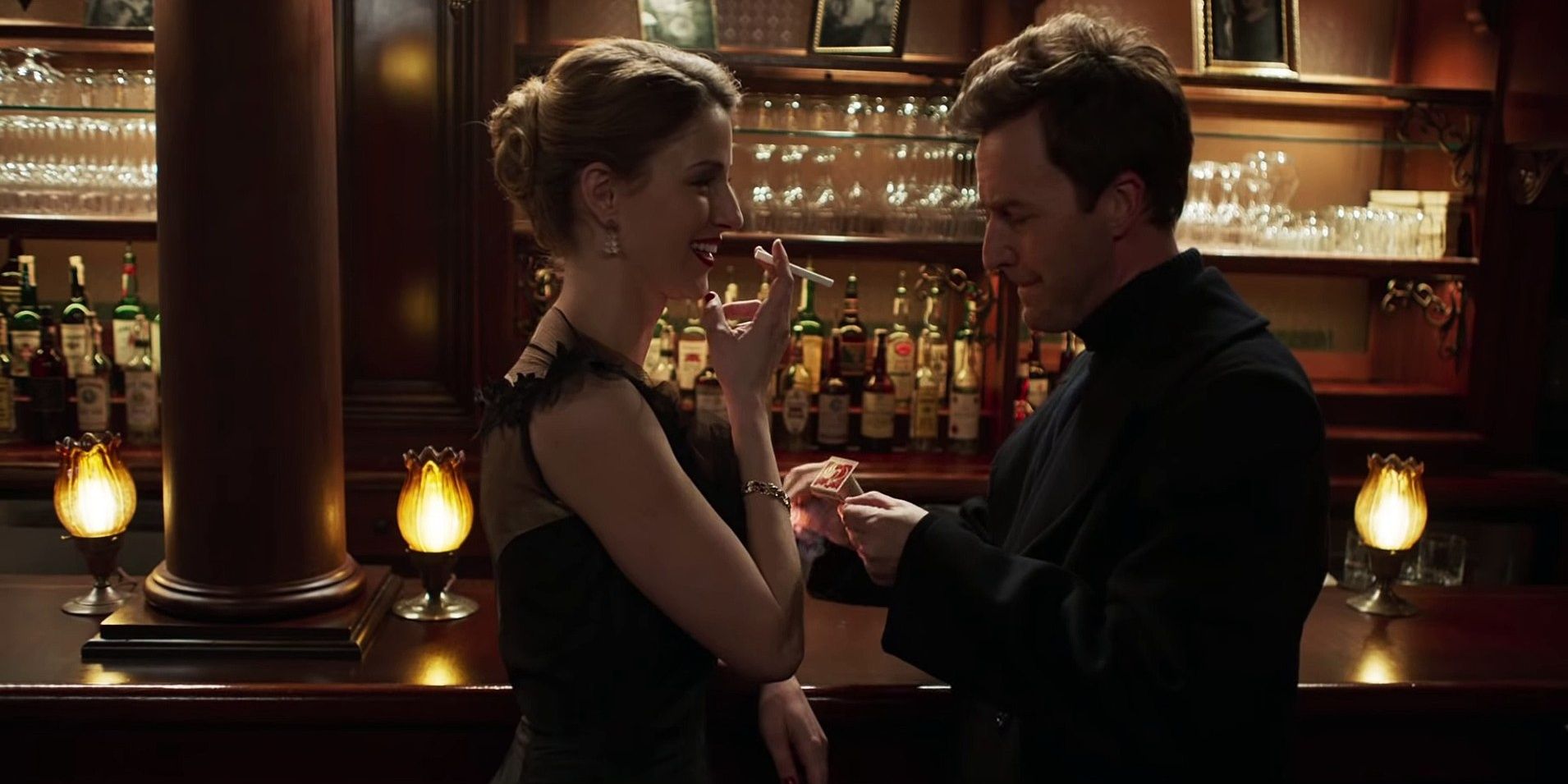Adapted from Jonathan Lethem’s novel of the same name, Motherless Brooklyn follows the story of Frank Minna, a private eye, and his protégé Lionel Essrog. After Minna gets murdered for uncovering some skeletons in real-estate baron Moses Randolph's closet, his protégé must put everything he has learned about the trade to good use and find the killer and the reason for the murder of his departed mentor and friend. However, there is a small twist to the tale. Essrog has Tourette's syndrome, a condition which is defined by him in the movie as “threads in my head”.
This condition results in him having no control over certain sounds or movements, also known as tics. The movie does try to portray this condition in the most sensitive and realistic manner possible, staying true to the source material it has borrowed Essrog’s character from. However, there are certain discrepancies that deviate from the most common symptoms of Tourette syndrome.
8 Gets Right: Motor Tics

Tourette syndrome is primarily a condition of the nervous system, especially the basal ganglia, responsible for body movements, whereby the person does not have any control over the sudden motions that their body is prone to do. These movements, known as motor tics, are hard to control and can be a response to excitement, stress, or tiredness, and can even cause distress in a person’s social life.
Therefore, the repeated bodily movements, face-shrugging, face-making, blinking, and arm jerking that Norton’s character Essrog displays in the movie is accurate and is characteristic of someone with Tourette syndrome.
7 Gets Right: Verbal tics

Another symptom that is associated with Tourette syndrome is the vocal tics that patients are known to display. This includes repeated coughing, yelping, barking, shouting, and even repeating the words of another person or continuously speaking similar sounding words (although extremely rare).
Therefore, when Essrog goes “Frank, Frankly, Frankity, Franko” in the movie and asks Frank Minna to not “wind him up” he was being true to his condition, which forces him to go into such fits of uncontrolled verbiage. Similar to motor tics, a person having Tourette syndrome has no control over their vocal tics.
6 Doesn't Get Right: Echolalia

While it is true that people with Tourette's syndrome are known to repeat the words of another person, the symptom is an extremely rare one. As the Centers for Disease Control and Prevention puts it, it is something that happens in very few patients and therefore, is not even a prerequisite for diagnosing Tourette syndrome.
Hence, Lionel Essrog's constant penchant to repeat the words spoken by another person seems to be a rare condition as far as the syndrome is concerned. However, it needs to be kept in mind that the character has been borrowed from Lethem's book, and in the book Lionel did have such a condition and therefore, the director cannot be blamed for including the same in the movie.
5 Doesn't Get Right: Nobody Knowing Lionel's Condition

It seems likely that Lionel's character would not have received adequate medical or supportive care for his condition as the movie presents his life to have been quite hard during his childhood.
However, the fact that Tourette syndrome was discovered in the year 1885 by Georges Gilles de la Tourette makes it seem very unlikely that nobody, not even Minna, knew what Lionel's condition was, or even really tried to.
4 Gets Right: Inner Thoughts

A fact that makes Edward Norton a brilliant director is the sensitivity he shows towards the character of Lionel Essrog, despite it being set in a time and place with a very different language and attitude surrounding mental illnesses. The movie shows the harshness that human beings are capable of.
However, it also establishes the fact that Lionel Essrog has detailed goals and desires as most people with Tourette syndrome do not find the condition to be a barrier in their professional and personal lives.
3 Doesn't Get Right: Having Tourette Syndrome Doesn't Necessarily Mean Hurling Out Obscenities

A common misconception that many television shows and movies have propagated about Tourette's syndrome is that those having it also have coprolalia, or the uncontrollable urge to hurl out obscenities. Though some with Tourette's syndrome do have this complex tic, a study conducted on Coprophenomenon in Tourette's syndrome showcased that only a small percentage of people showcase such complex tics.
However, given the fact that Norton brought Jonathan Lethem's novel to life, and the author had particularly described Essrog to display coprolalia, it is understandable why Norton’s portrayal of the same exhibits such behavior.
2 Gets Right: Obsessive-Compulsive Disorder

The authenticity of Lionel as a character is accentuated with the addition of co-occurring conditions such as OCD, which people with Tourette syndrome are known to exhibit.
Therefore, the scene where Essrog lights the match only to blow it off, not once but thrice, might seem exaggerated on-screen but is quite true to life in reality.
1 Doesn't Get Right: How Essrog Controls His Tics In Certain Moments

While Frank Minna had helped Lionel to control his tics the fact that Lionel continues to exhibit them late into his adulthood signifies that his condition is advanced. However, it should also be noted that most people with Tourette syndrome late into their adulthood usually see the symptoms easing and can also control it to a certain extent unless they are fatigued or tired.
However, it seems very unlikely for Essrog to shift from a fit of tics to an effortlessly smooth conversation, especially during a tense moment such as the conversation with Moses Randolph. Anyone with Tourette syndrome would have trouble controlling their tics in such a seamless manner, especially while talking to a narcissistic murdering psychopath like Moses Randolph, and subduing might even cause the tics to aggravate.
from ScreenRant - Feed https://ift.tt/3jhWnDK


0 Comments